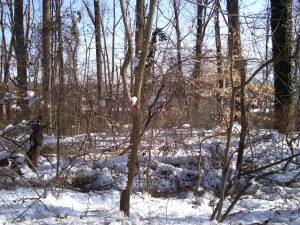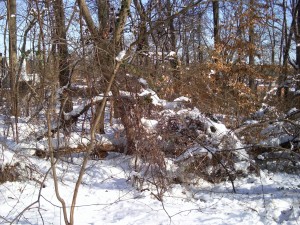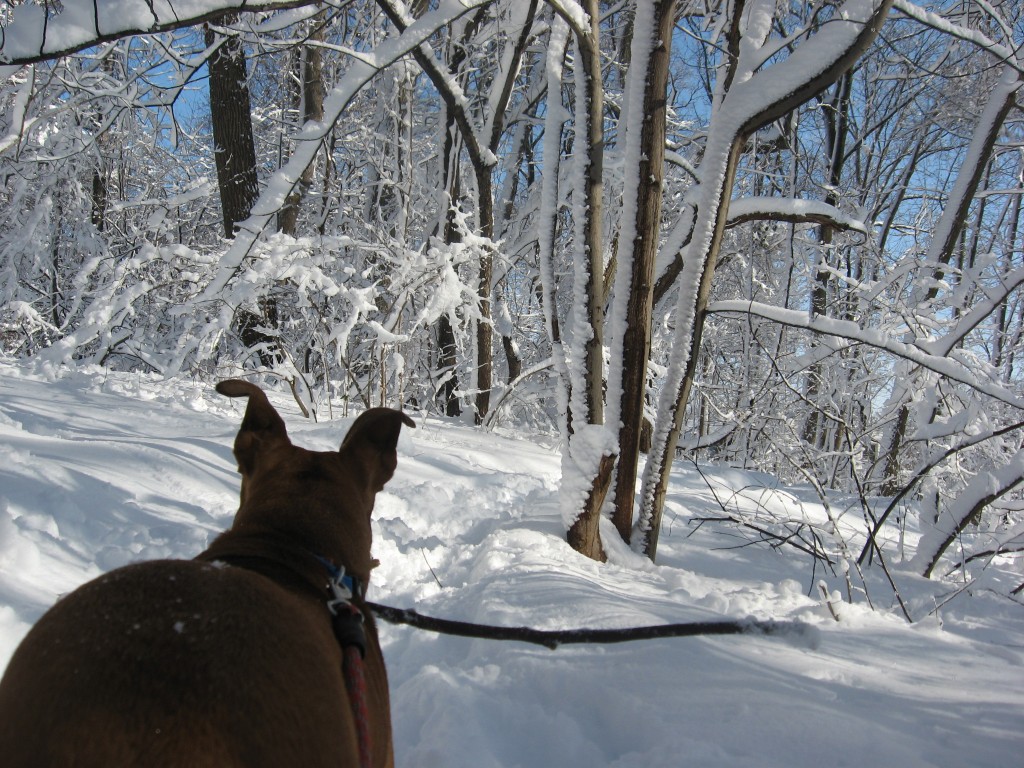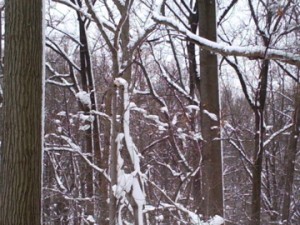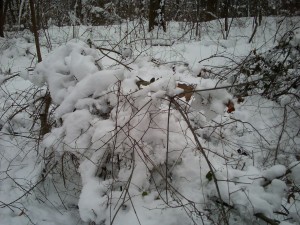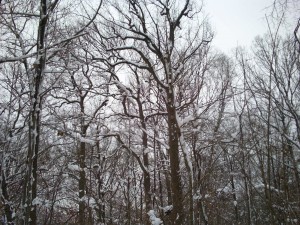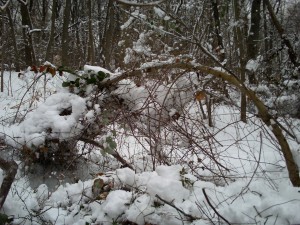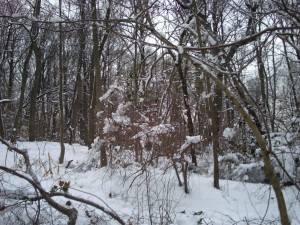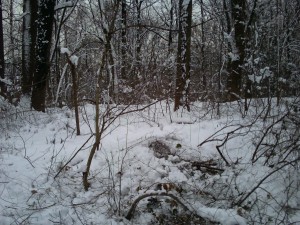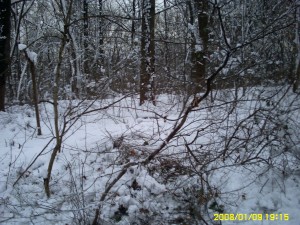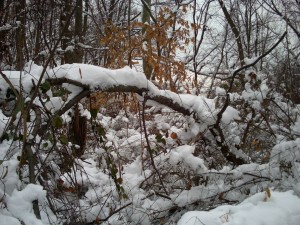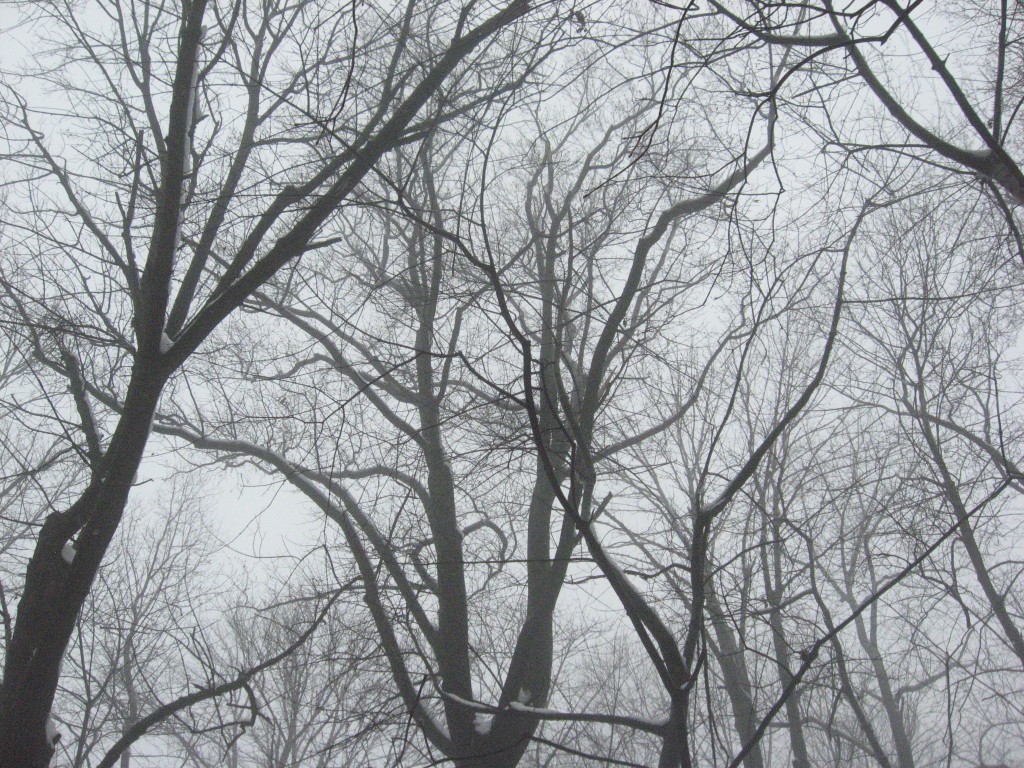
Tulip Poplar (Liriodendron tulipifera) is a tall and majestic tree with beautiful green and orange tulip- like flowers that is best enjoyed a safe distance from any property. Â This fast-growing native tree has the best chance of rebuilding the forest canopy in now blighted sections of Morris Park. We were surprised to see a specimen at the Mt Cuba Center that was at least 25 feet tall and had a decent girth, that was planted only 12 years ago. It was planted after an older tree had fallen, opening up a hole in the canopy that would have created a problematic situation for their piedmont woodland garden. Â The Tulip poplar, a pioneer species in forest regeneration, provided the shade and dappled light needed by woodland beauties such as bluebells (Mertensia virginiana) Â and the many species of Trillium represented at Mt Cuba Center.
In Morris Park , we have no need to plant Tulip Poplar in the canopy holes. Â All we do is remove the invasives, and one will start growing on its own. Â In fact we have to weed them out of our garden all the time. Â The best ones we transplant deeper in the park in blighted areas, so they get an early start, before we have the chance to remove the invasives.
Some of the finest Tulip Poplar specimens we have ever seen can be found in the Wissahickon Valley gorge, a section Of Fairmount Park right here in Philadelphia. These trees are gigantic, with very wide and straight trunks, towering into the forest. Â Just walk along the Forbidden Drive and look up the hill, on the west side of the road, all along the route and they can be seen, often growing in the small ravines that spill into the Wissahickon.
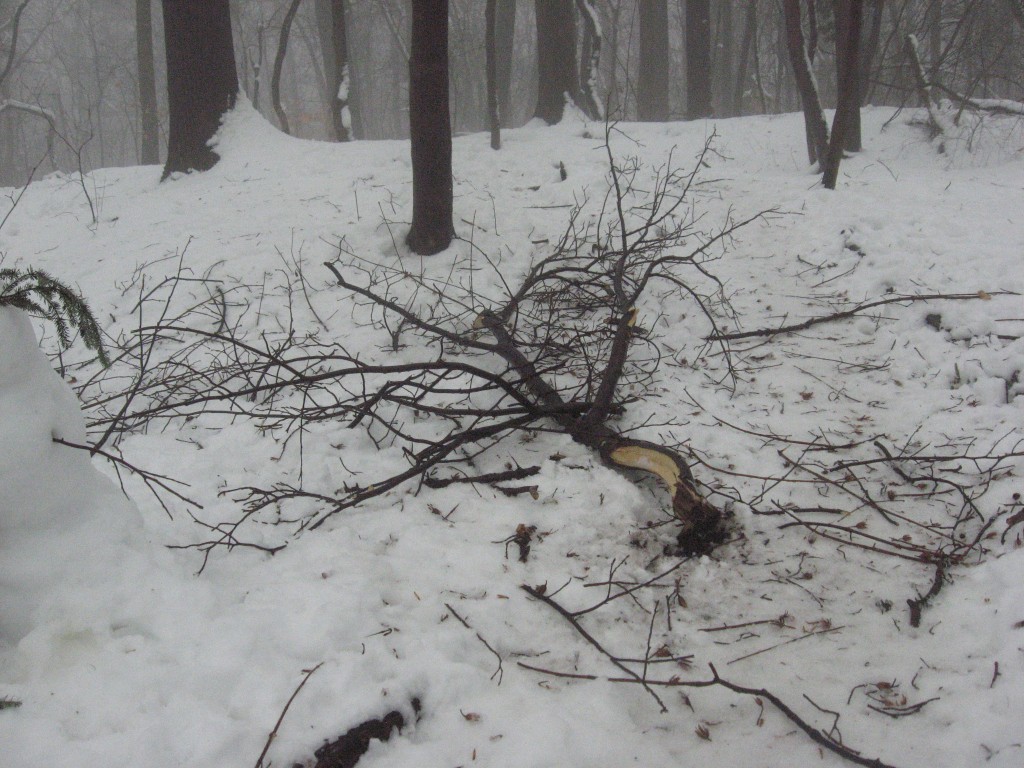
Here we have only touched upon the many redeeming qualities of the Tulip Poplar, and there is much more to expound upon concerning its place in the forest and its attributes that make for a great and magnificent forest tree. Â However, it does have a bit of a habit that can be troublesome if one is located too close to something that is best not crushed on a yearly basis. The wood is soft and and the branches easily dismount and will careen towards your most valued objects if they are near the tree. Â The branch will make a loud cracking sound first, giving a warning to all that will heed the call. Weather is not always the only thing that will make it fall. A bit of rot on one part of the branch can make it fall anytime.
A word of warning: Listening to ones I-pod while in the forest is not recommended. The forest is the kind of place where all of ones senses should be  alert, especially in the city. Not long ago a young woman was found dead in the Wissahickon, with a large tree branch on top of her. Her i-pod was still playing music when they found her.  We often wonder if she could’ve reacted more appropriately if she was able to hear the branch cracking, before it crashed down.
Also, climbing a Tulip Poplar is not recommended. Here the saying “going out on a limb” most applies.
THE DAMAGE
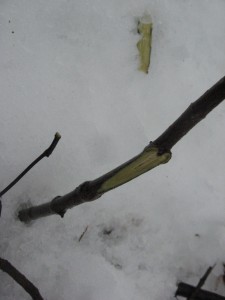
Here it is, a little Dogwood (Cornus florida) sapling that was split in half from the pummeling missile that violently plunged down in its exact direction. See how low in the trunk it was hit? This could seriously compromise the tree’s chance of survival. We planted this tree from the funds provided our block by the Philadelphia Department of Street’s Philadelphia More Beautiful Committee. By entering the block in the yearly most beautiful block contest, we were awarded a small amount of money to beautify the block, which is how this tree was purchased.
It was planted at the very terminus of the block, which ends at the park, in an area we call the horseshoe (because of the the two paths on each side of the street, which curve together to meet at the top of a small hill). The vision was that someday there would be this elegant native tree, that in the spring would provide a beautiful display of flowers framed at the end of the block, for all to see.
The spot where it was planted was previously covered with the invasive exotic saplings of Norway maple (Acer platanoides), the exotic invasive groundcover English Ivy (Hedera helix), Garlic Mustard (Alliaria petiolata) an herbaceous invasive exotic and Lesser Celandine (Ranunculus ficaria). Â Also in this spot was dumped material, with at least 700 pounds of concrete rubble, old bricks, potato chip bags dating back to the 70s, bottles, electrical wire, car parts etc. Â
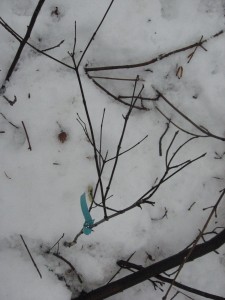
The good news is that half of the tree is still alive! Â Hopefully by may of 2030, there will be a halfway decent dogwood tree with some nice blooms on it. We had originally planted two of them, but one suddenly died without prior notice, possibly from the dogwood anthracnose disease, a blight affecting these beautiful native trees.
The Groundhog Day storm was alot of ice pelting down for about an hour or so early this morning, resulting in the branch that fell, some freezing rain and then just rain later on. Â Off in the park, a Sassafrass branch (Sassafrass albidum) came down from a mature specimen.
Why does the Tulip Poplar break so easily? What is the evolutionary advantage of this? Â Perhaps, because the tree is so tall (The tallest in the canopy in these parts) it needs to stay tall and compete. Â What use is an old lower branch that is not getting that much sun and using up needed resources? Â If they break off easily after serving their usefulness, the tree will be better served, able to redirect those resources to growing ever taller branches, outcompeting other trees.
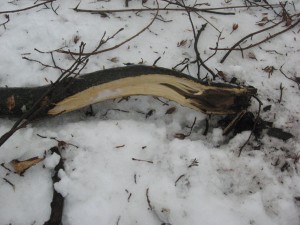
The blackened area at the very tip is not rot, but dirt. Â The branch went into the ground like a spear before rebounding to its present location.



